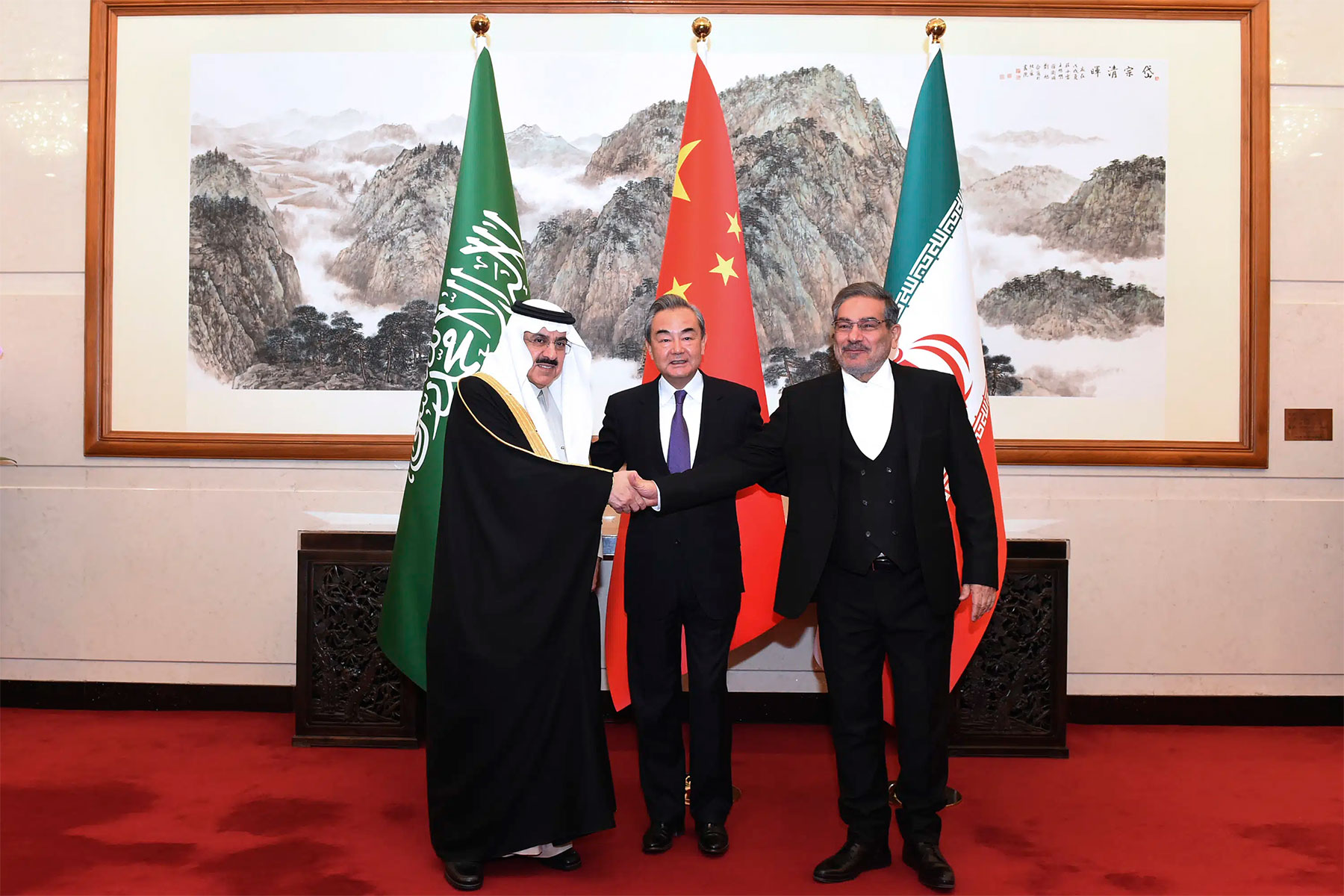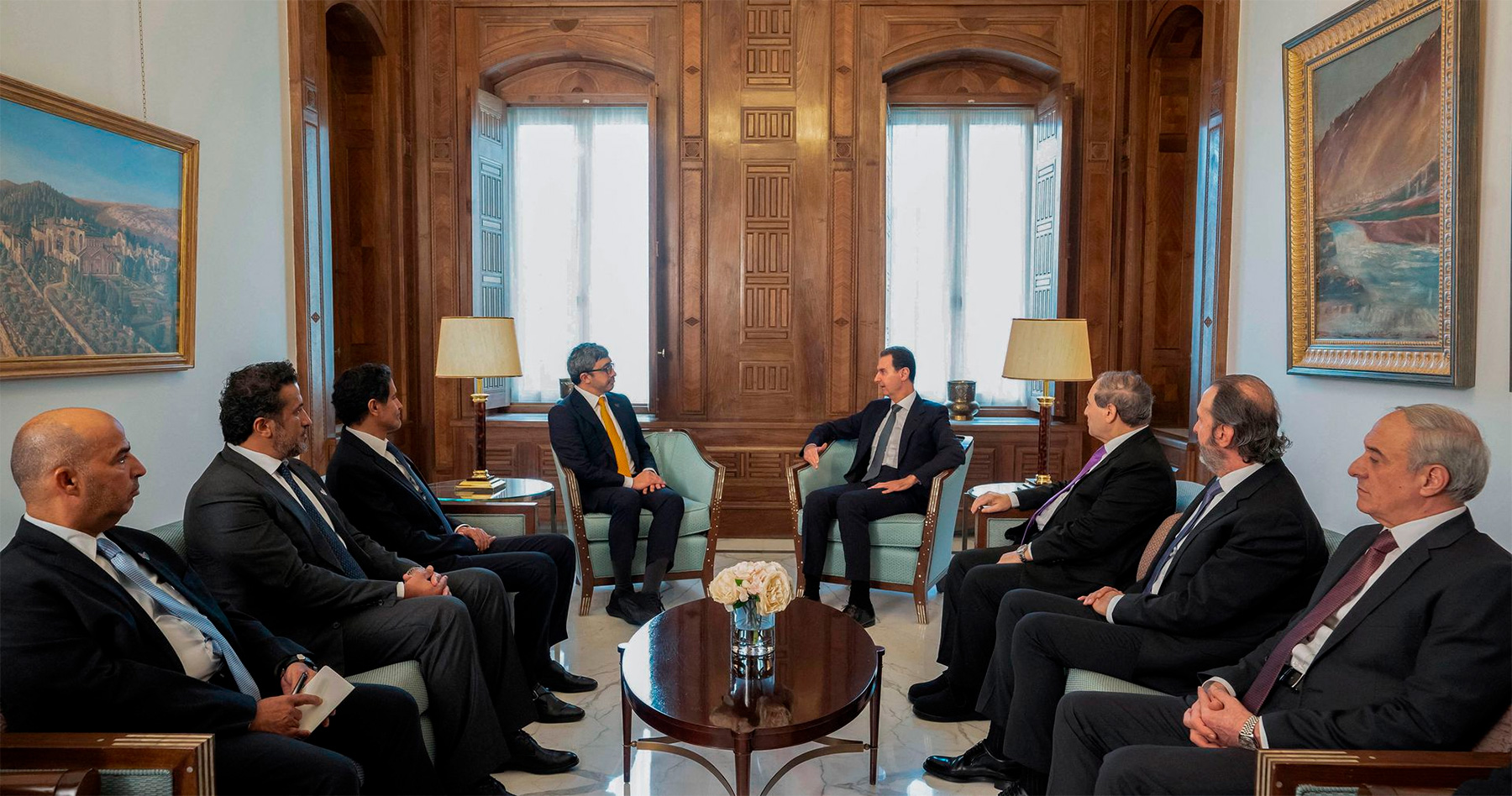Given that some conflicts in West Asia are still smoldering, the potential for them to be rekindled with renewed vigor remains. One of the most effective mechanisms to stabilize the situation in the region would be to create a comprehensive regional collective security framework. A promising format is the Conference on Security and Development. Opportunities for its productivity and effectiveness largely depend on how subregional integration projects pan out.
In a fast-changing world, reconfiguring alliances, Iranian-Saudi rapprochement, and Syria’s return to the LAS have brought new neo-modernist meanings to international relations. Escaping the precession of simulacra which we find ourselves in again and again will require sub-regional and regional structural reorganization. In this respect, analysts and researchers must inevitably face the need to define the conceptual framework for the new environment. Should the Middle East be referred to as West Asia and the Persian Gulf referred to as the Gulf? Not only are the forms and content of these terms changing rapidly, the connotations themselves are also undergoing remarkable transformations.
East Asia, Southeast Asia, South Asia have already taken shape as unquestionable term designations for their corresponding region. As for West Asia, however, the “Middle East” narrative remains dominant. In the quest to find new regional security solutions, “West Asia” could become a valuable synonym for the traditionally narrowly used concept of the Middle East. Such a change in terminology would not only provide a new perspective on existing long-standing problems, but might also bring economic and geographic components of cooperation to the forefront, allowing for comparisons with other regions of the world. Using the term “West Asia” for a potentially new inclusive structure—if the regions elites decide to create a permanent platform to discuss security and development issues—would help address the convergence of the Arab world (which already has its regional structure, the LAS) on the one hand, and Israel, Iran, and Turkey on the other.
A key subregion that would allow West Asian states to engage in adequate security and development-related dialogue is the Gulf region. Convergence in the Gulf leads to reduced tensions in West Asia. Unfortunately, quite often the very terminology used regarding this region has a negative impact on the overall judgements and expectations placed on it. The name “Persian Gulf” generally accepted in Europe (and in Iran as well) clashes with the Arab Gulf term that is embraced by Arab nations. External players maneuver and seek some sort of a middle ground as they communicate with their counterparts by using one or the other concept depending on who they negotiate with. However, such an opportunistic approach in using specific terminology has a negative impact if the goal is to create an atmosphere of mutual engagement. In this sense, the political will of leaders in Tehran and Arab capitals is required to convene a sub-regional security conference (to then form a respective security framework), where lexical neutrality for the sake of positive peace building would prevail. The Gulf of West Asia could become the world’s only “Gulf.”
A new organization could be created. Both regional initiatives to implement collective security and the concepts of other players could be used as a building block for the principles of the new organization. With this, it is worth mentioning Russia’s proposed Concept of Collective Security in the Persian Gulf. This group could set the agenda and prepare all the necessary documents for the Gulf Conference on Security and Cooperation. Later, following a series of such meetings, the sub-regional states could start moving towards establishing an organization on Security and Cooperation in the Gulf.Such a structure could be based on the principles of security, economic and humanitarian cooperation. The Gulf subregion could be declared a nuclear weapons free zone (since all those states are members of the NPT), in addition to embracing non-interference in the internal affairs of other states, etc. Be that as it may, a nuclear weapons free zone is proposed as the core and cementing principle for the subregion.
Simultaneously, work could be carried out on addressing security problems in West Asia, including meetings of various working groups and mutual agreements based on principles of the future organization’s performance. This includes an inclusive regional security framework known as the Security Conference for West Asia and North Africa. Its mission would be to build trust between the region’s states, promoting peace and stability in the macro region, and creating effective tools to counter extremism and terrorism. The issue of nuclear weapons would be more acute in this regard, but states could agree to move forward on other issues, returning to their preferred nuclear posture in due course.
Given that some conflicts in West Asia are still smoldering, the potential for them to be rekindled with renewed vigor remains. One of the most effective mechanisms to stabilize the situation in the region would be to create a comprehensive regional collective security framework. A promising format is the Conference on Security and Development. Opportunities for its productivity and effectiveness largely depend on how subregional integration projects pan out.
The following article further develops existing proposals on shaping a regional security network in West Asia and North Africa. However, regional representatives are required to come up with an adequate response to regional challenges themselves.
New World Order—New Terminology (The Gulf and West Asia)
In a fast-changing world, reconfiguring alliances, Iranian-Saudi rapprochement, and Syria’s return to the LAS have brought new neo-modernist meanings to international relations. Escaping the precession of simulacra which we find ourselves in again and again will require sub-regional and regional structural reorganization. In this respect, analysts and researchers must inevitably face the need to define the conceptual framework for the new environment. Should the Middle East be referred to as West Asia and the Persian Gulf referred to as the Gulf? Not only are the forms and content of these terms changing rapidly, the connotations themselves are also undergoing remarkable transformations.
The notion of the Near East or Middle East (terminology commonly used in both English and Arabic) was invented as a convenient way for the British to describe their journey to India. The beginning of the twenty-first century and Pax Americana saw this concept take root so that the local inhabitants, analysts, and regional elites were forced to use these terms when referring to where they live, which proved vital to them. Foreign influences followed suit, with some exceptions. East Asia, Southeast Asia, South Asia have already taken shape as unquestionable term designations for their corresponding region. As for West Asia, however, the “Middle East” narrative remains dominant. In the quest to find new regional security solutions, “West Asia” could become a valuable synonym for the traditionally narrowly used concept of the Middle East. Such a change in terminology would not only provide a new perspective on existing long-standing problems, but might also bring economic and geographic components of cooperation to the forefront, allowing for comparisons with other regions of the world. Using the term “West Asia” for a potentially new inclusive structure—if the regions elites decide to create a permanent platform to discuss security and development issues—would help address the convergence of the Arab world (which already has its regional structure, the LAS) on the one hand, and Israel, Iran, and Turkey on the other.
Many researchers have already attributed the current regional changes to the emergence of a “new generation of leaders.” This is due, among other things, to the growing popularity of leadership studies. Renowned Arab leader Mohammed bin Salman has already declared his desire to turn the region into a “new Europe” of the 21st century. Nevertheless, the new generation of leaders would never emerge without the previous generation—those pragmatic and perhaps not as savvy individuals, forced to hide and conceal themselves, but occasionally act aggressively to accumulate resources and opportunities in order to secure their place in the emerging world order. Generally, the behaviors of the new generation have been triggered by ongoing global changes. As the author of this article has already noted, the return of the “Arab voice” could be anticipated in the midst of global transformations. Today, the leader of Saudi Arabia can allow himself, as was once the case for his country during the bipolar era, to discuss sanctions against the U.S. and refuse to follow his Western partners.
A key subregion that would allow West Asian states to engage in adequate security and development-related dialogue is the Gulf region. Convergence in the Gulf leads to reduced tensions in West Asia. Unfortunately, quite often the very terminology used regarding this region has a negative impact on the overall judgements and expectations placed on it. The name “Persian Gulf” generally accepted in Europe (and in Iran as well) clashes with the Arab Gulf term that is embraced by Arab nations. External players maneuver and seek some sort of a middle ground as they communicate with their counterparts by using one or the other concept depending on who they negotiate with. However, such an opportunistic approach in using specific terminology has a negative impact if the goal is to create an atmosphere of mutual engagement. In this sense, the political will of leaders in Tehran and Arab capitals is required to convene a sub-regional security conference (to then form a respective security framework), where lexical neutrality for the sake of positive peace building would prevail. The Gulf of West Asia could become the world’s only “Gulf.”
The Collective and Bloc Approach in the New Regional Order
Multipolarity means that there are multiple agendas promoted by different actors. Embracing multipolarity in the region will come down to answering two major questions:
1) Are actors currently advocating for a multipolar and inclusive world willing to accept the role played by former hegemons and their allies? Does inclusivity have its limits?
2) Will the former hegemons and their allies succeed in imposing their approaches to managing the regional agenda?
In promoting a collective approach to security, researchers are unwittingly drawing upon the experience of the Helsinki Accords of half a century ago. The “three-basket format” (security, economy and humanitarian cooperation), which became the basis for the Helsinki process in Europe, could—with obvious adjustments for regional specifics—form the basis of a new collective security network in the Middle East. The basic principles of the Helsinki process—renunciation of the threat or use of force to resolve disputes, respect for sovereignty and territorial integrity, commitment to the settlement of territorial and border disputes solely through negotiations or other peaceful means, and fulfilling international obligations in good faith—are no less relevant for the Middle East today than they were for Europe in 1975.
Today, it is difficult to make a case for the “Helsinki experience” to be a complete success, but two key conditions for establishing the Conference on Security in Europe that was later transformed into the Organization for Security and Cooperation in Europe, are worth considering. The first is an unspoken agreement by the superpowers—USSR and the USA—on maintaining neutrality in Europe; this ensured its peaceful development. The second is a strong internal impulse for cooperation, solidified by shared economic interests (the European Coal and Steel Community). If to apply these basic principles to West Asia, we could point, firstly, to the flagging interest of the former destabilizing superpower in this region in conditions of the world transferring to multipolarity. This has strengthened the role of regional players, thus creating barriers to decisive external interference. Secondly, even though OPEC arrangements are not equivalent to the Union of Coal and Steel, they could take on a role as a “Union of Oil and Prices.” Furthermore, new technological clusters are taking shape in the region, interstate infrastructure is being built, the energy sector keeps expanding, and there are successful examples of subregional economic alliances. These conditions could allow the regional states to sit down and discuss the principles of future regional collective security.
An inclusive approach to regional security would certainly be impossible without defining the role and place of external forces. The region (at least partly) has always been a security consumer rather than a security provider. In this sense, the U.S., Russia and European nations, all exerting power projection, as well as China, India and other countries, capable of fostering their influence in the region, should also agree with the regional actors on the modalities of their involvement in the new regional order. However, here arises a confrontation between the collective and bloc approaches to security.
American priorities are based on deterring China. Although the region has lost some of its erstwhile attraction or appeal in the eyes of the U.S. political class, Americans may continue to see it as a battleground against Beijing. The U.S. promotes an Indo-Pacific strategy to contain China, but recent developments imply that the Americans are seeking to bolster their engineering and technology policy, complementing it with an updated version of the Middle East strategy.
The search for a new U.S. strategy is not based on an inclusive approach proposed for this region by Moscow and Beijing, but on a bloc approach. Thus, the U.S. and Israel have held a summit in the Negev in 2023 where the UAE, Bahrain (Saudi Arabia, visible behind the scenes), Morocco and Egypt attended this summit. On the other hand, the U.S. is promoting the I2U2 format (Israel, India, U.S., UAE). Cairo and Riyadh are also looking closely at these players. For Saudi Arabia, this format is interesting because, despite rapprochement with Iran, the Saudis need opportunities to strengthen their negotiating positions with Tehran. The rapprochement between Iran and Saudi Arabia, in the absence of another back-up plan, may not stand the test of time. If this happens, China will lose face due to its lack of having other leverage, apart from economic might (but China is unlikely to impose sanctions since Tehran and Riyadh are constantly at odds with one another).
Given this potential dynamic, China, while promoting its Belt and Road Initiative for access to West Asia via the China-Pakistan corridor, may encounter resistance from the emerging Indo-Abrahamic alliance (presumably meaning an alliance of India, Israel and some Arab sympathizers of the United States), vigorously supported by the U.S. The same conundrum confronts those regional actors, diplomats, and scholars who are committed to building a collective regional security network.
Principles and Proposals for Building a Security Framework
The institutional anchor for Iran’s rapprochement with the Arab states could rely on the nature of new institutional relations in the Gulf. The GCCAS, the Gulf Cooperation Council for the Arab States of the Gulf (as is in Arabic original), should be transformed along these new lines. A new organization could be created. Both regional initiatives to implement collective security and the concepts of other players could be used as a building block for the principles of the new organization. With this, it is worth mentioning Russia’s proposed Concept of Collective Security in the Persian Gulf.
The Russian concept proposes sticking to a gradual phasing principle: holding consultations in order to then establish an initiative group whose mission would be developing measures in the field of subregional security. This group could set the agenda and prepare all the necessary documents for the Gulf Conference on Security and Cooperation. Later, following a series of such meetings, the sub-regional states could start moving towards establishing an organization on Security and Cooperation in the Gulf.Such a structure could be based on the principles of security, economic and humanitarian cooperation. The Gulf subregion could be declared a nuclear weapons free zone (since all those states are members of the NPT), in addition to embracing non-interference in the internal affairs of other states, etc. Be that as it may, a nuclear weapons free zone is proposed as the core and cementing principle for the subregion.
Simultaneously, work could be carried out on addressing security problems in West Asia, including meetings of various working groups and mutual agreements based on principles of the future organization’s performance. This includes an inclusive regional security framework known as the Security Conference for West Asia and North Africa. Its mission would be to build trust between the region’s states, promoting peace and stability in the macro region, and creating effective tools to counter extremism and terrorism. The issue of nuclear weapons would be more acute in this regard, but states could agree to move forward on other issues, returning to their preferred nuclear posture in due course.







